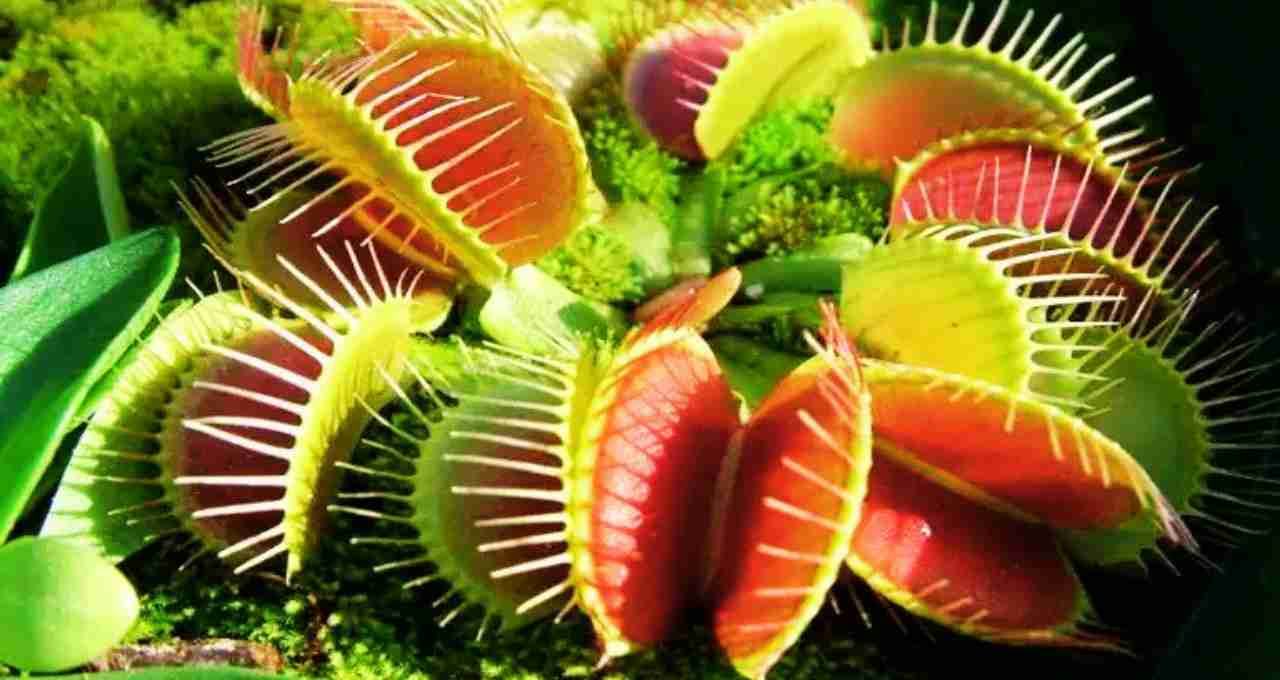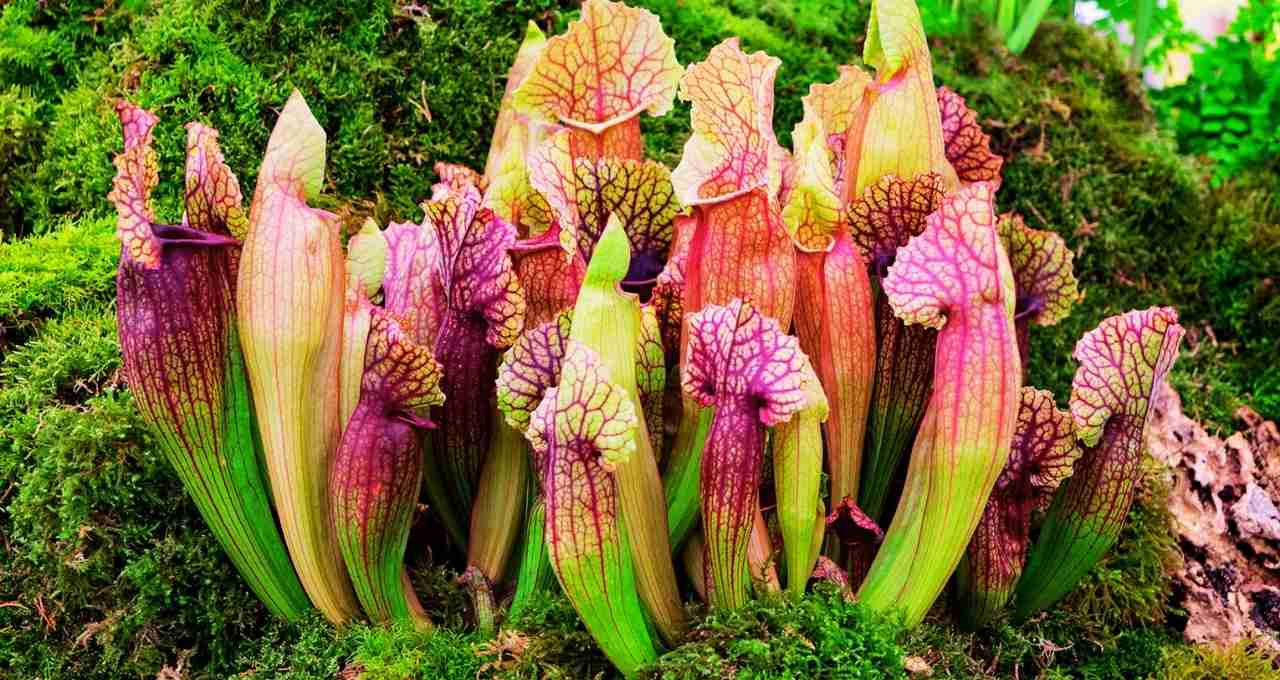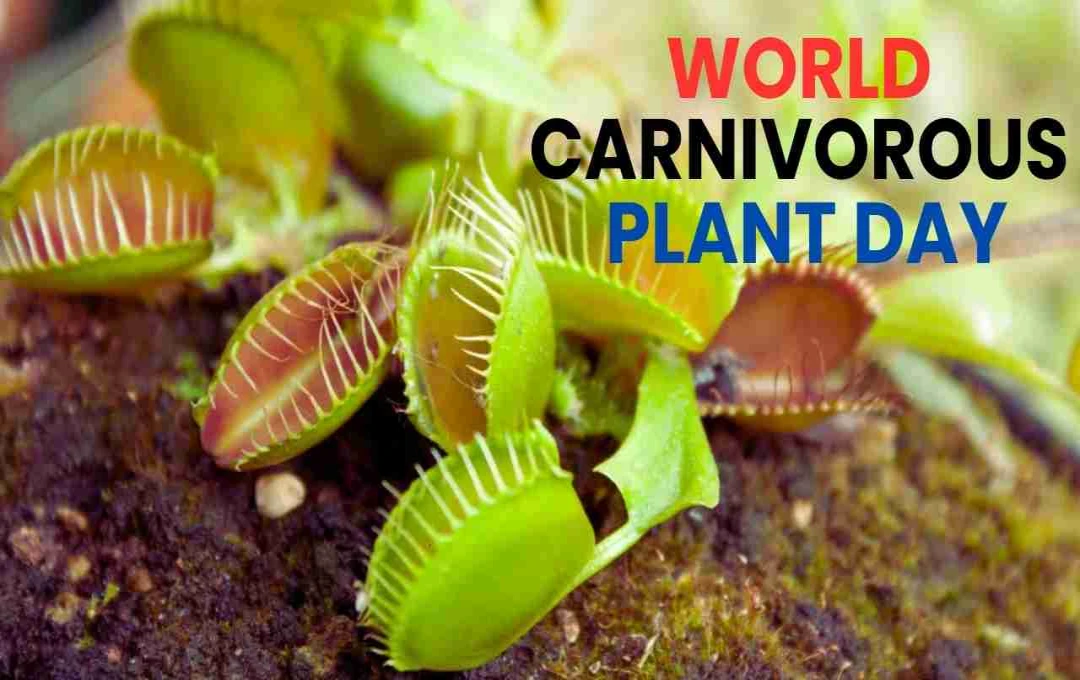World Carnivorous Plant Day is observed every year on May 7th. This day is specifically dedicated to raising awareness about plants that, unlike typical plants, survive not only on soil, water, and sunlight, but also by consuming insects.
It may sound unusual, but it's true that some plants on Earth trap and consume live insects as "food." The unique structure and functioning of these plants have fascinated scientists and nature enthusiasts worldwide.
What are Carnivorous Plants?
Carnivorous plants are plants that capture small insects and organisms, digest them, and obtain essential nutrients. Their primary method involves using specialized leaves or structures to attract insects. Once an insect approaches, they trap it and then digest it to fulfill their nutritional needs.
Carnivorous plants are commonly found in areas where the soil is deficient in nutrients like nitrogen and phosphorus. To compensate for this deficiency, these plants obtain the necessary nutrients from insects. In this way, carnivorous plants play a unique role in nature, employing an unusual method to meet their requirements.
How do Carnivorous Plants Hunt Insects?
The structure of carnivorous plants has evolved to attract and trap insects. Some plants secrete sticky substances on their leaves, attracting insects. As soon as an insect lands on these leaves, it gets stuck and cannot escape.
Some plants fold their leaves to create a trap. When an insect approaches, the leaves snap shut, trapping it. Other plants are pitcher-like, containing sweet nectar; when an insect enters to drink the nectar, it slips and falls, unable to escape. The plant then slowly digests the insect.
Some Famous Carnivorous Plants

- Venus Flytrap: This plant is the most famous among carnivorous plants. Its leaves are divided into two parts, resembling a mouth. These leaves have small hairs; when an insect or any other object touches them, they snap shut instantly, trapping the insect between the closed leaves and secreting digestive juices.
- Pitcher Plant: The pitcher plant's shape resembles a pitcher, with a dark-colored interior. It contains sweet nectar that attracts insects. When an insect enters to taste the nectar, it slips and falls to the bottom, unable to escape. The pitcher plant then slowly digests the insect.
- Sundew: Sundew plants have sticky secretions on their leaves that attract insects. When an insect lands on the leaf, it becomes stuck in the secretion and is unable to escape. The plant then slowly begins to digest the insect.
Why is World Carnivorous Plant Day Celebrated?
Celebrated annually on May 7th, the main objective of this day is to educate people about carnivorous plants and raise awareness for their conservation. Carnivorous plants prey on insects or other small organisms for sustenance.
Many carnivorous plant species are currently endangered. The primary cause is the loss of their natural habitat. Deforestation, pollution, and climate change are reducing their numbers. It is essential to work towards the conservation of these plants so that they can remain with us for future generations.
The purpose of celebrating this day is to remind us that understanding and protecting every unique creation of nature is our responsibility. World Carnivorous Plant Day teaches us that every possible effort should be made to conserve these plants.
Can Carnivorous Plants be Grown at Home?

Yes, it is possible to grow carnivorous plants at home, and many people do. These plants are not only beautiful and attractive but also help in catching mosquitoes and small insects. If you want to grow these plants at home, you need to take special care.
Carnivorous plants require proper care. They prefer a humid and clean environment, so they should be kept in a place with ample moisture. It is important to protect these plants from direct sunlight, as excessive sun can scorch them. They obtain nutrients from insects; therefore, these plants do not require regular fertilizers. Furthermore, it's crucial to provide them with pure water, such as rainwater or RO water. By keeping all these points in mind, you can easily grow carnivorous plants at home.
Why is it Special for Children and Students?
World Carnivorous Plant Day is an excellent opportunity to increase children and students' interest in science and nature. Various activities can be organized in schools to make this day special. Students can learn about carnivorous plants and understand their importance. To make this day interesting for children, exhibitions can be organized where carnivorous plants can be seen and information about them obtained.
In addition, informative posters can be created in schools, highlighting interesting facts about carnivorous plants and measures for their protection. To make the day even more engaging, nature-related stories can be told to students, inspiring them to think about plants and organisms. In this way, this day becomes not only a learning opportunity for children and students but also enhances their love for nature.
The Message of World Carnivorous Plant Day

World Carnivorous Plant Day gives us the opportunity to understand that every organism and plant in nature has its own special role. Carnivorous plants are a prime example, teaching us how life adapts to meet its needs. These plants use their unique structures to capture insects and fulfill their nutritional requirements, proving that everything in nature has a purpose and a method.
The message of this day is to understand the diversity and complexity of nature. The unique lifestyle of carnivorous plants shows us how each plant and organism lives in its own way and maintains balance in the environment. By spreading awareness about these plants, we can not only understand their importance but also be inspired to protect them and their natural habitats.
World Carnivorous Plant Day, celebrated on May 7th, is not just a day related to plants; it's a day to get closer to and protect the magical world of nature. Let us all resolve on this occasion to understand these unique plants, cooperate in saving them, and inspire our children to connect with nature.














